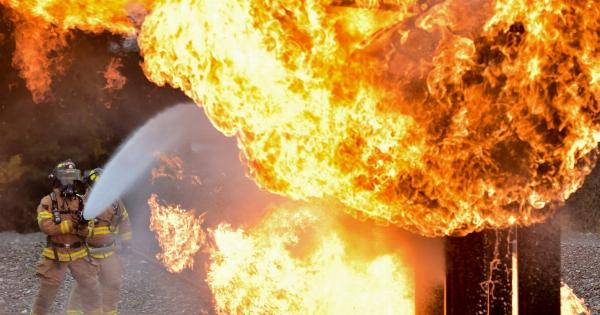The human body is a fascinating mechanism that adapts and responds to various external stimuli, including temperature changes.
In hot weather conditions, our bodies have a natural way of cooling down, while in cold weather, we tend to shiver as a way to warm up. Understanding the cooling of the human body is essential in maintaining our health and preventing heat-related illnesses. Let’s take a closer look at how our bodies regulate temperature.
The Thermoregulatory System
The human body is equipped with a unique thermoregulatory system that keeps our internal body temperature within a narrow range – about 98.6°F or 37°C.
Our brains regulate this process using feedback mechanisms that detect the changes in temperature and respond accordingly. The hypothalamus, located in our brain, plays a vital role in controlling the body’s temperature.
When the body is too hot or too cold, the hypothalamus sends signals to activate different physiological responses to bring the body back to its normal temperature.
Sweating
One of the most effective ways our bodies cool down is through sweating. Sweat is produced by sweat glands, which are located all over our skin.
When we get too hot, the hypothalamus sends signals to the sweat glands to produce sweat, which is mostly composed of water and salt. As sweat evaporates from our skin, it absorbs heat from our body, reducing our body temperature. It is crucial to stay hydrated during hot weather conditions to replenish the lost fluids from sweating.
Vasodilation
Another mechanism our bodies use to cool down is vasodilation. When we are hot, our body’s blood vessels dilate, allowing more blood flow to the surface of our skin.
This increased blood flow allows more heat to radiate from our skin to the air, reducing our body’s temperature. This process can cause our skin to turn red or flushed, which is a sign of vasodilation.
Respiration
Respiration, or breathing, is another way our bodies cool down. When we breathe, we inhale cool air and exhale warm air, which can help reduce our body’s temperature.
Additionally, when we exhale, we release water vapor, which can help cool our respiratory system and our body.
Shivering
Shivering is a way our bodies try to warm up when we are cold. When we shiver, the muscles in our body contract rapidly, which generates heat. This process can help raise our body’s temperature and keep us warm.
However, if we continue to shiver for a prolonged period, it can lead to fatigue and exhaustion.
The Importance of Cooling
Proper cooling is essential in maintaining our health, especially during hot weather conditions. Our bodies can overheat, leading to heat exhaustion or heat stroke, which can be life-threatening.
Heat exhaustion is characterized by symptoms such as excessive sweating, weakness, dizziness, and nausea, while heat stroke is a severe condition that can cause the body’s internal temperature to rise to dangerous levels. Both conditions require immediate treatment, including moving to a cooler environment, hydration, and medical attention.
In Conclusion
The cooling of the human body is a complex process that involves various physiological responses to maintain our internal temperature.
Our bodies use different mechanisms, such as sweating, vasodilation, respiration, and shivering, to regulate our temperature and prevent our body from overheating or getting too cold. Understanding the importance of cooling is crucial in maintaining our health and preventing heat-related illnesses.



























